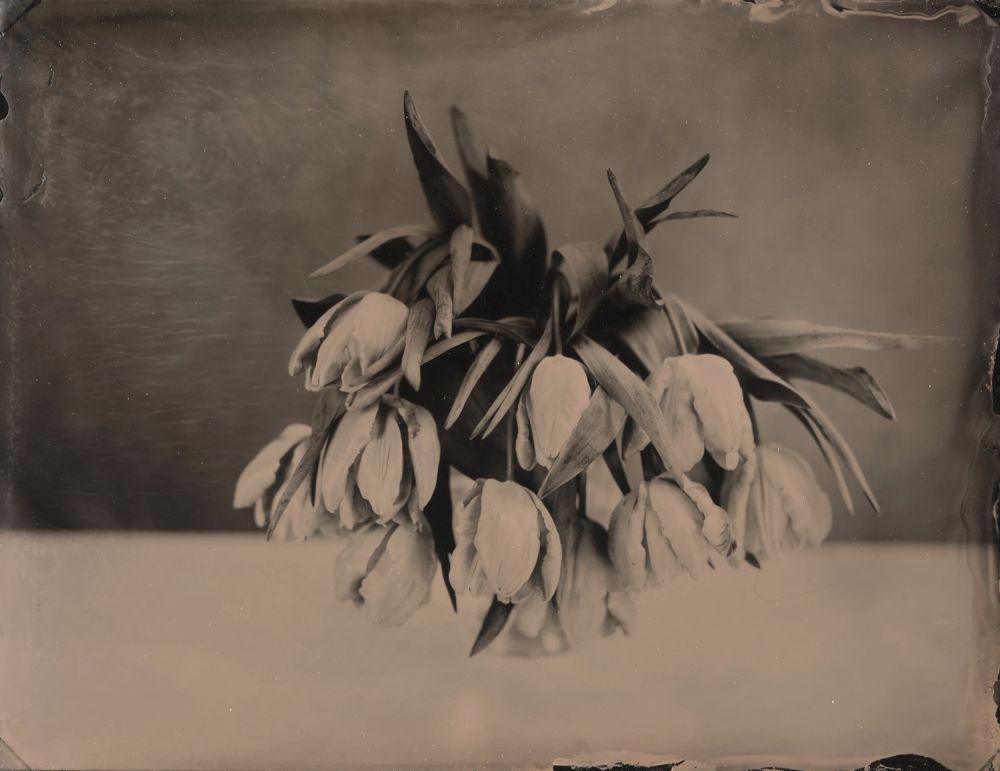"Tulpen"
WVZ #69
Ambrotype on black glass (wet plate collodion photography)
signed and WVZ number on verso
Steffen Diemer worked as a photographer until 2013 for internationally renowned magazines such as Der Spiegel, Stern, National Geographic and for daily newspapers such as Frankfurter Allgemeine and The Guardian.
His focus was on social documentary reportage in war and crisis zones in more than seventy countries, primarily in the Near and Middle East, the Near East, Japan, and South Africa.
The year 2011 marked a reorientation and a new beginning, caused by exhaustion, doubts about his mission, and a crisis of purpose because of his past experiences as a war and reportage photographer. Diemer said goodbye to journalistic photography and became enthusiastic about the wet collodion process—a photographic process that is over 170 years old and produces a motif developed on black glass. Diemer produces the chemicals needed for the complex process himself. Full of dedication and with a high time commitment, he produces photographic objects that seem to have fallen out of time, contemplative and full of stillness.
Preferred motifs of his artistic work are flowers, branches, fruits, glasses filled with water, fish, all motifs that we know from the tradition of still life painting. But he is also interested in banal motifs of everyday life such as shoes, chocolate kisses or light bulbs.
However, Diemer is not interested in the naturalistic representation, but in perception, in pausing and studying. His main interest is the spirituality of the material world and the beauty in the banal. His goal is to establish a soul into his pictures. If one asks about influences, one finds Japanese references to the ink painting of Hasegawa Tôhaku. In general, reduction, simplicity, and the search for the essential are core components of Diemer's pictorial creations.
(Ira Stehmann Fine Art)

